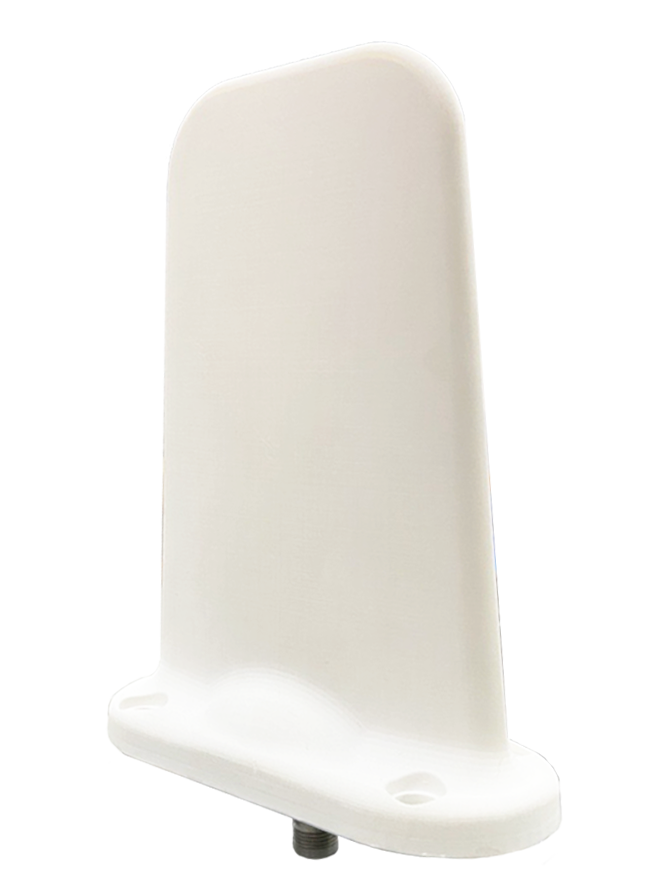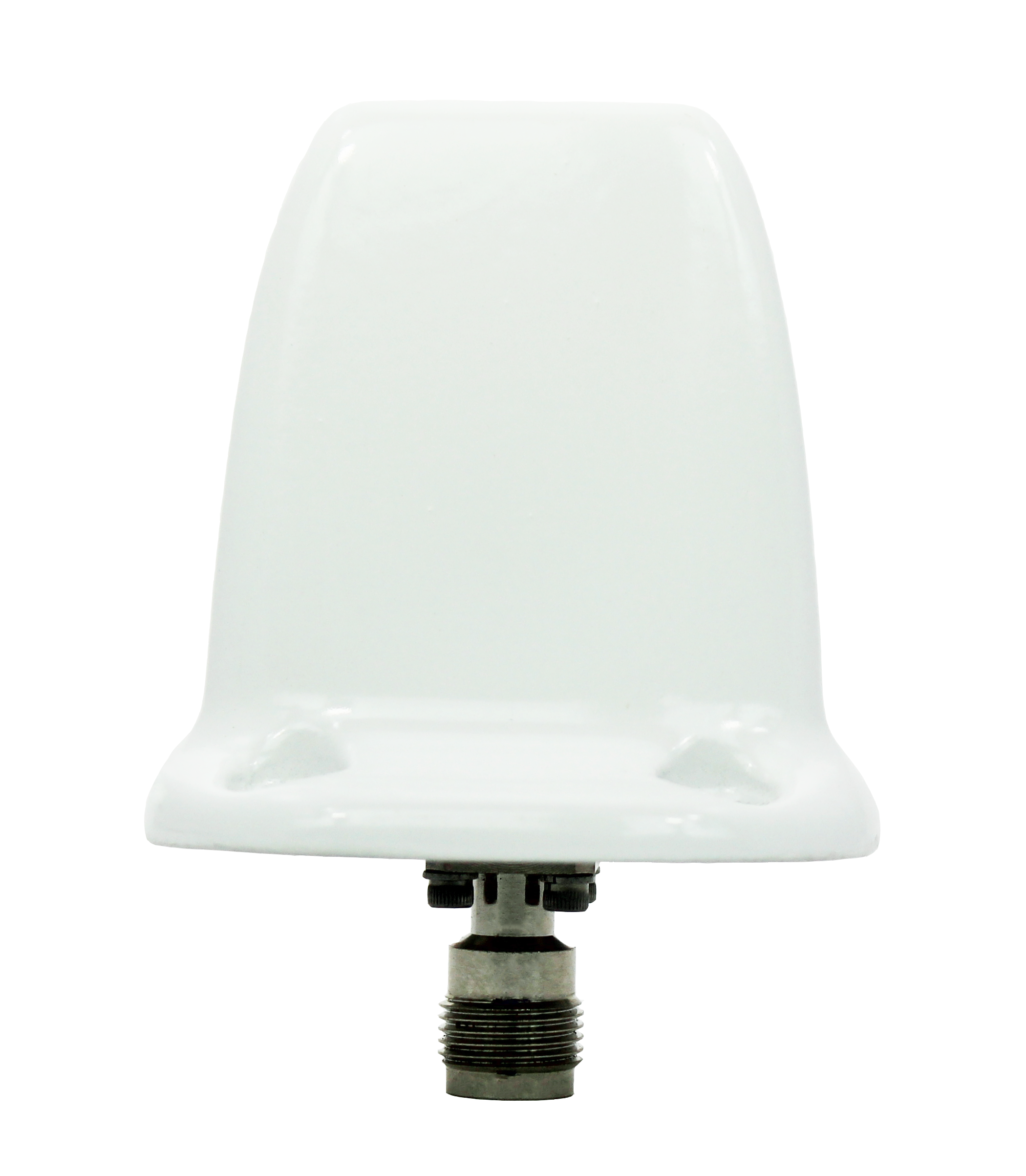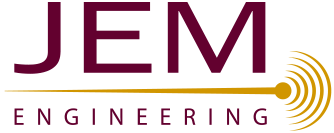Blade Antennas & Their Advantages
July 2023In the Aerospace Industry, when we think of blade antennas, we may visualize aerodynamic antennas that are typically mounted onto the exterior of an aircraft. However, the term “blade antenna” has a much broader description. In a previous post, we introduced blade antennas in relation to flight qualified antennas. In this post, we elaborate on what blade antennas are, as well as their advantages.
The term “blade antenna” doesn’t refer to a specific antenna design. Rather, it describes a class of antennas with certain characteristics:
1. Flat and Planar Structure. Blade antennas are typically designed with a flat, planar structure. The conducting elements of the antenna are placed on a flat surface, such as a printed circuit board (PCB), substrate, or metallic plate. This flat structure distinguishes blade antennas from other types of antennas that have three-dimensional or non-planar designs.
2. Thin and Low Profile. Blade antennas are characterized by their thin and low-profile construction.
3. Broadside Radiation Pattern. Blade antennas are often designed to have a broadside radiation pattern, which means that the majority of the energy is radiated perpendicular to the plane of the antenna. This radiation pattern makes them suitable for applications that require omnidirectional coverage or specific beamforming characteristics.

There are numerous benefits to using blade antennas, for both defense and commercial applications.
1. High Frequency Range. Blade antennas generally operate within the high-frequency range, typically in the ultra high frequency or microwave bands. They are commonly used in various communication systems, including wireless networks, mobile devices, satellite communication, and radar systems.
The UVW-0430B, also known as the UHF Dipole Blade Antenna, operates within frequencies between 400 MHz and 6000 MHz. Like most of JEM Engineering’s quick-turnaround blade antennas, the UVW-0430B is suitable for UAV, SIGINT, cellular, and sensor systems.
2. Relatively Small Size. Because blade antennas are generally low profile, compact, and lightweight, they can easily be integrated into electronic devices. Naturally, this means that they’re well-suited for applications where space is limited. For example, the UVW-0827, also known as the L/S Band Miniature Blade Antenna, is relatively weightless and is about 2 inches tall. Despite its small size, it boasts a wide frequency range, operating between 800 MHz and 3000 MHz. The UVW-1547, also known as the UAV Communications Antenna, operates within frequencies between 1500 MHz and 4700 MHz.
3. Affordability. Simple blade antennas can be fabricated using low-cost manufacturing processes, making them suitable for mass production.

Blade antennas come in many forms.
Depending on the specific application requirements, they can be designed in various shapes and configurations, including microstrip patch antennas, PIFAs, slot antennas, and planar dipole antennas.
In conclusion, blade antennas are favored in many applications due to their versatility, compactness, and cost-effectiveness. However, their performance characteristics, such as radiation pattern, gain, and bandwidth, are highly dependent on the specific design and configuration of the antenna. Therefore, it’s important to carefully consider their design to to ensure optimal performance in different applications.
Our experts at JEM Engineering can help you determine if any of our ready-to-ship airborne blade antennas are suitable for your application. Alternatively, we can develop new designs to perfectly fit your needs.
Latest Posts

10 Factors that Affect Antenna Performance
We get a lot of inquiries regarding antenna performance in various settings, one of them being, “how far will the antenna propagate?” In this post, we describe some of the many factors that affect antenna performance.

Hedy Lamarr: The Hollywood Actress Who Changed Wireless Technology
This Women’s History Month, we wanted to highlight the life and career of Hedy Lamarr, a famous Hollywood star whose lesser-known achievements include essentially laying the foundations for the spectrum-hopping technology we know today as WiFi.

Living Legends: James West and Jesse Russell
Every February, JEM Engineering honors the the African American Engineers who have made lasting contributions in STEM. This year, we’re excited to spotlight two living legends: James Edward West and Jesse Eugene Russell.
